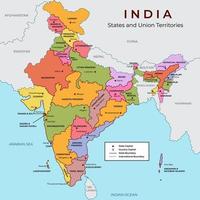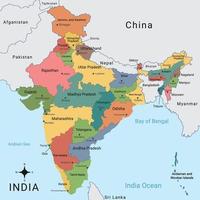Captain Arun Khetrapal
| Full Name | Captain Arun Khetrapal |
| Date of Birth | October 14, 1950 |
| Place of Birth | Pune, Maharashtra, India |
| Date of Death | December 16, 1971 |
| Place of Death | Shakargarh, Pakistan |
| Rank | Captain |
| Unit | 17th Poona Horse (Armoured Regiment) |
| Service Years | 1969 – 1971 |

Introduction:
Captain Arun Khetrapal is remembered as one of India’s most heroic martyrs from the 1971 Indo-Pakistani War. He displayed extraordinary courage and leadership on the battlefield, which led to him being posthumously awarded the Param Vir Chakra, India’s highest military honor. His unwavering bravery at the age of 21 remains an inspiration to generations of Indians, particularly in the military community.
Childhood & Early Life:
Arun Khetrapal was born on October 14, 1950, in Pune, Maharashtra, into a military family. His father, Colonel M.L. Khetrapal, served in the Indian Army, which deeply influenced Arun’s early life. Growing up in a family with a strong military background, Arun developed a sense of discipline, patriotism, and service to the nation from an early age.
He was an intelligent and disciplined child, excelling in his studies. He attended St. Joseph’s Convent High School in Pune, where he was a diligent student and a keen sportsman. His passion for the military began to take shape during his formative years, and he harbored aspirations to follow in his father’s footsteps. Encouraged by his parents, he joined the National Defence Academy (NDA) in Pune after completing his schooling, where he began his formal training to become an officer in the Indian Army.
At the NDA, Khetrapal was known for his leadership qualities and athletic abilities. He further honed his skills and knowledge, excelling in his training and gaining the respect of his instructors and peers. After successfully completing his training at the NDA, he went on to the Indian Military Academy (IMA) in Dehradun, where he passed out in 1969 and was commissioned as a second lieutenant into the 17th Poona Horse, an armoured regiment.
Army Career:
Upon commissioning, Captain Arun Khetrapal was posted to the 17th Poona Horse, which was an armoured regiment known for its high standards and strong combat history. His training in armoured warfare equipped him to handle the tough challenges of modern warfare, and he quickly rose through the ranks due to his leadership skills and bravery.
The 1971 Indo-Pakistani War, which was fought over the issue of East Pakistan (now Bangladesh), would mark the defining moment of his military career.
Khetrapal’s unit was deployed in the Shakargarh sector, one of the most fiercely contested regions during the war. The region was heavily fortified by Pakistani forces, and Indian forces were tasked with breaking through these defenses.
On December 16, 1971, Captain Khetrapal’s tank was engaged in a fierce battle near the Shakargarh salient, a strategically vital location in the war. Khetrapal’s tank, despite taking a direct hit and being critically damaged, continued to engage the enemy with remarkable skill. It was during this action that Khetrapal destroyed multiple Pakistani tanks and inflicted significant damage to enemy positions, which played a key role in the success of the Indian Army’s assault.
As the battle raged on, Khetrapal’s tank was hit again, and he was fatally wounded. Despite being severely injured and unable to move, he continued to command his tank crew and repel Pakistani forces. His bravery and refusal to abandon his post in the face of death were the hallmarks of his extraordinary courage. He ultimately died on the battlefield, but his actions ensured the destruction of several enemy tanks, contributing to the eventual victory for the Indian forces.
Major Works:
- Role in the 1971 Indo-Pakistani War: Captain Khetrapal’s most significant contribution came during the Battle of Basantar, which was a pivotal battle in the Shakargarh sector. The Poona Horse, under his command, launched a daring assault against entrenched Pakistani positions. His tank destroyed two Pakistani tanks and was instrumental in the advance that led to the capture of crucial positions.
- Heroic Last Stand: Despite being severely injured, Captain Khetrapal’s refusal to leave his tank and his determination to continue the fight exemplified his leadership and bravery. His actions became a symbol of the courage of Indian soldiers during the war.
Awards & Achievements:
Captain Arun Khetrapal was posthumously awarded the Param Vir Chakra (PVC) for his valor during the 1971 war. The Param Vir Chakra is the highest military honor in India, awarded for acts of extraordinary bravery in the face of the enemy. Khetrapal’s award citation reads:
“Captain Arun Khetrapal displayed outstanding courage, leadership, and determination in a highly dangerous situation. Even after being grievously injured, he refused to abandon his tank, continuing to fight and destroy the enemy’s armored vehicles, thereby contributing decisively to the success of the operation.”
Khetrapal’s bravery was not just recognized by his comrades but also became a source of national pride. His name remains etched in history as one of India’s youngest recipients of the Param Vir Chakra, awarded at the age of 21.
Personal Life & Legacy:
Captain Arun Khetrapal’s life was short but impactful. He was a young man driven by an unwavering sense of duty and patriotism. His family, particularly his parents, were deeply proud of his service, and his father, Colonel M.L. Khetrapal, expressed both sorrow and pride upon learning of his son’s sacrifice.
His legacy is celebrated through numerous memorials and events across India. A notable memorial to Captain Khetrapal stands at the Basantar Memorial in Jammu and Kashmir, commemorating his sacrifice during the Battle of Basantar.
In addition to the memorial, several institutions and roads across India have been named in his honor, ensuring that his courage and sacrifice are never forgotten.
Trivia:
- Captain Khetrapal’s death made him one of the youngest martyrs in the history of the Indian Army, as he was only 21 years old at the time of his passing.
- His Param Vir Chakra citation and legacy have inspired countless young Indians to join the military, embodying values of courage and selflessness.
- Captain Khetrapal’s heroism has been immortalized in books, documentaries, and even films that celebrate the bravery of soldiers during the 1971 war.
- His tank, though severely damaged, is said to have continued to function for some time after his death, a testament to the strength of his leadership and the durability of the equipment he commanded.
Conclusion:
Captain Arun Khetrapal’s life and actions represent the epitome of selfless service, courage, and dedication to the nation. Despite his short life, he made an indelible mark in the history of the Indian Army and continues to be a source of inspiration for soldiers and civilians alike. His bravery during the 1971 war stands as a shining example of what it means to serve with honor, and his story will forever be remembered in the annals of India’s military history.
Key Terms:
- 17th Poona Horse ,
- 1971 Indo-Pakistani War ,
- Basantar Battle ,
- bravery ,
- Captain Arun Khetrapal ,
- Indian Army ,
- Indian Army officer ,
- Indian Military History ,
- leadership ,
- Martyr ,
- military awards ,
- military hero ,
- Param Vir Chakra ,
- Sacrifice ,
- Shakargarh ,
- tank commander ,
- War Hero ,
- young hero
Disclaimer: The information provided here has been compiled from various sources to the best of our knowledge. While every effort has been made to ensure the accuracy of the details, there may be occasional errors or omissions. If you find any discrepancies or incorrect information, kindly inform us so we can make the necessary corrections. Thank you for your understanding and cooperation.





